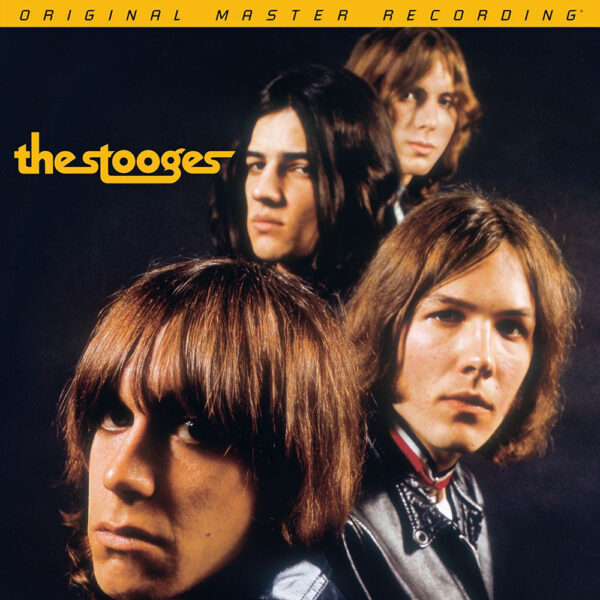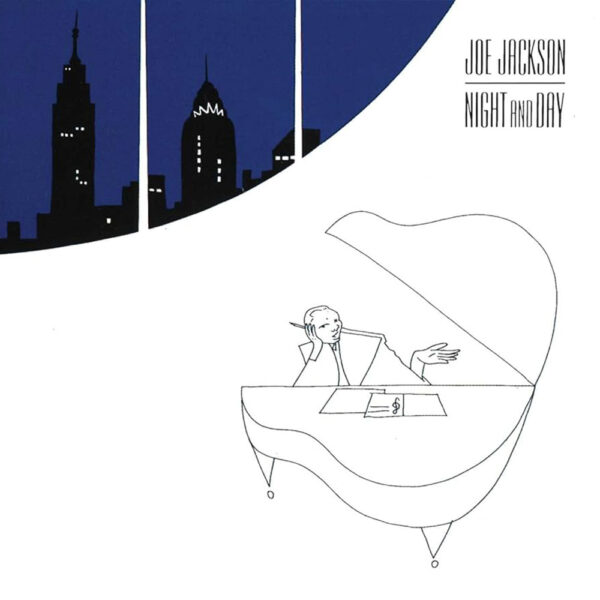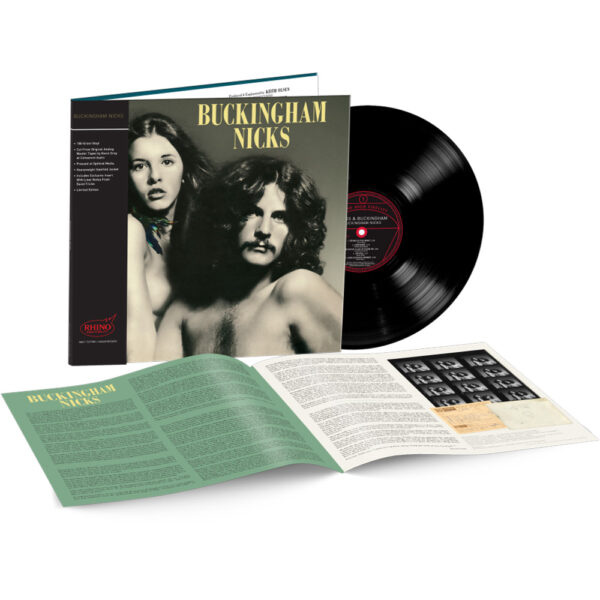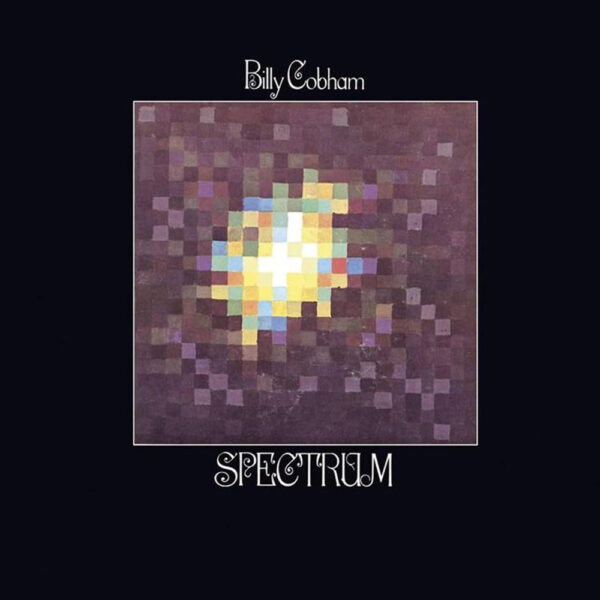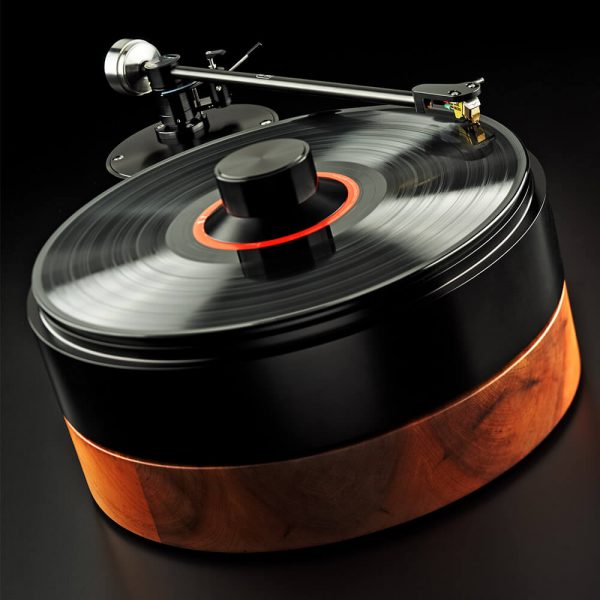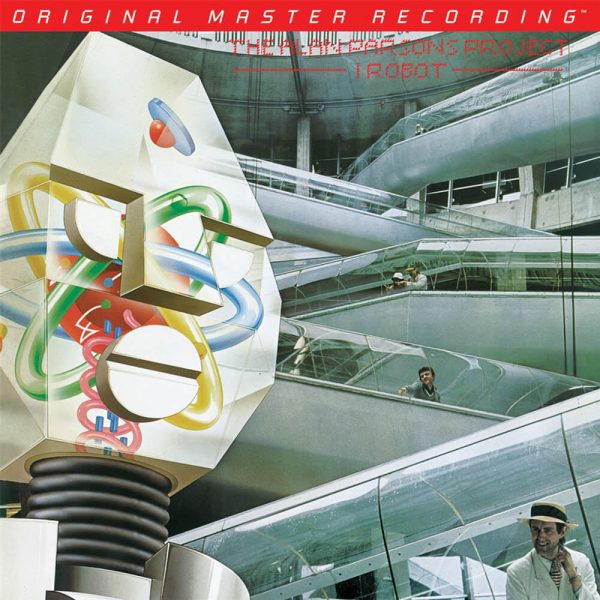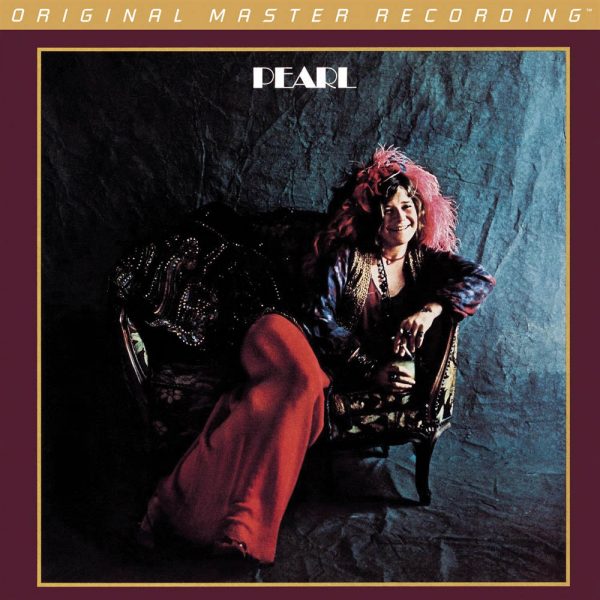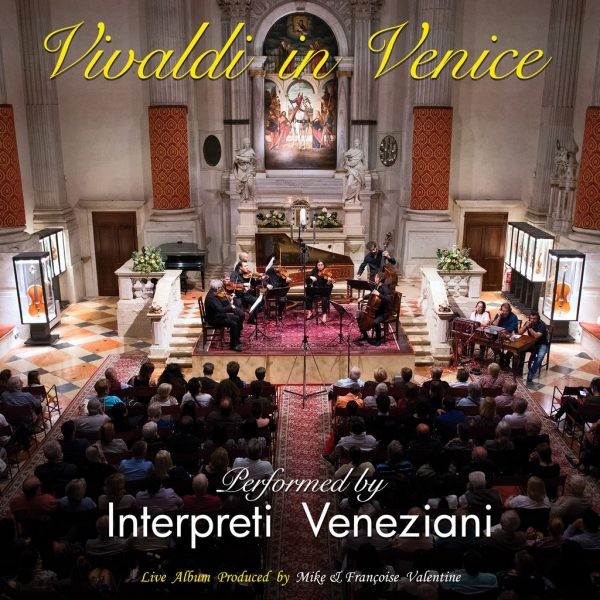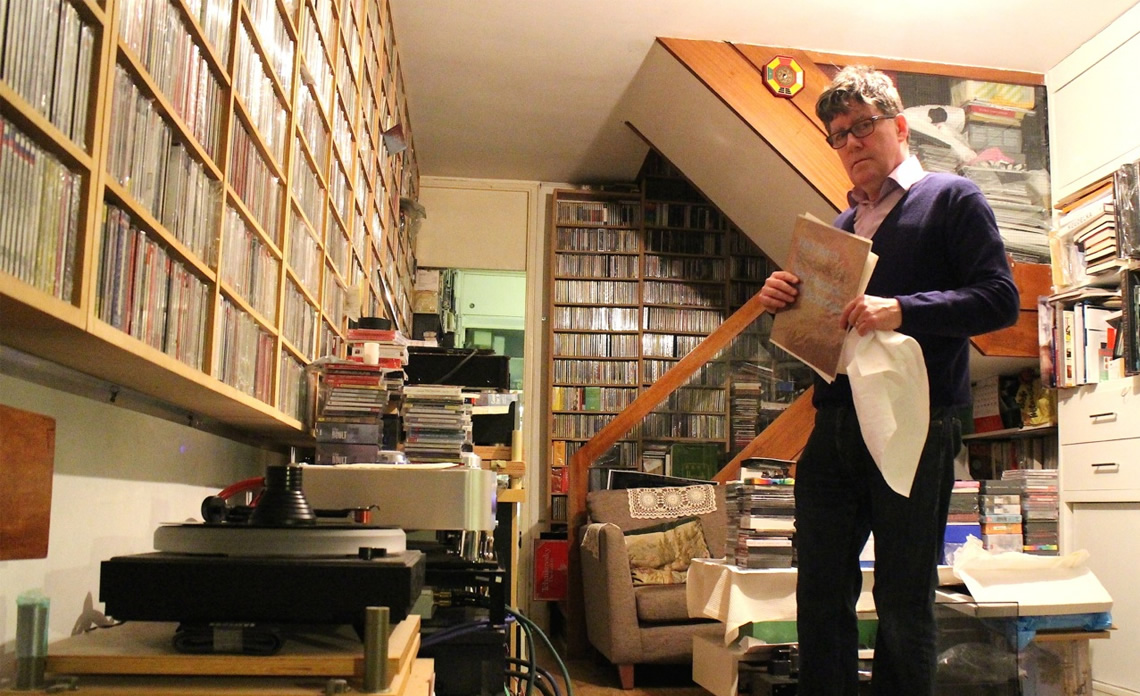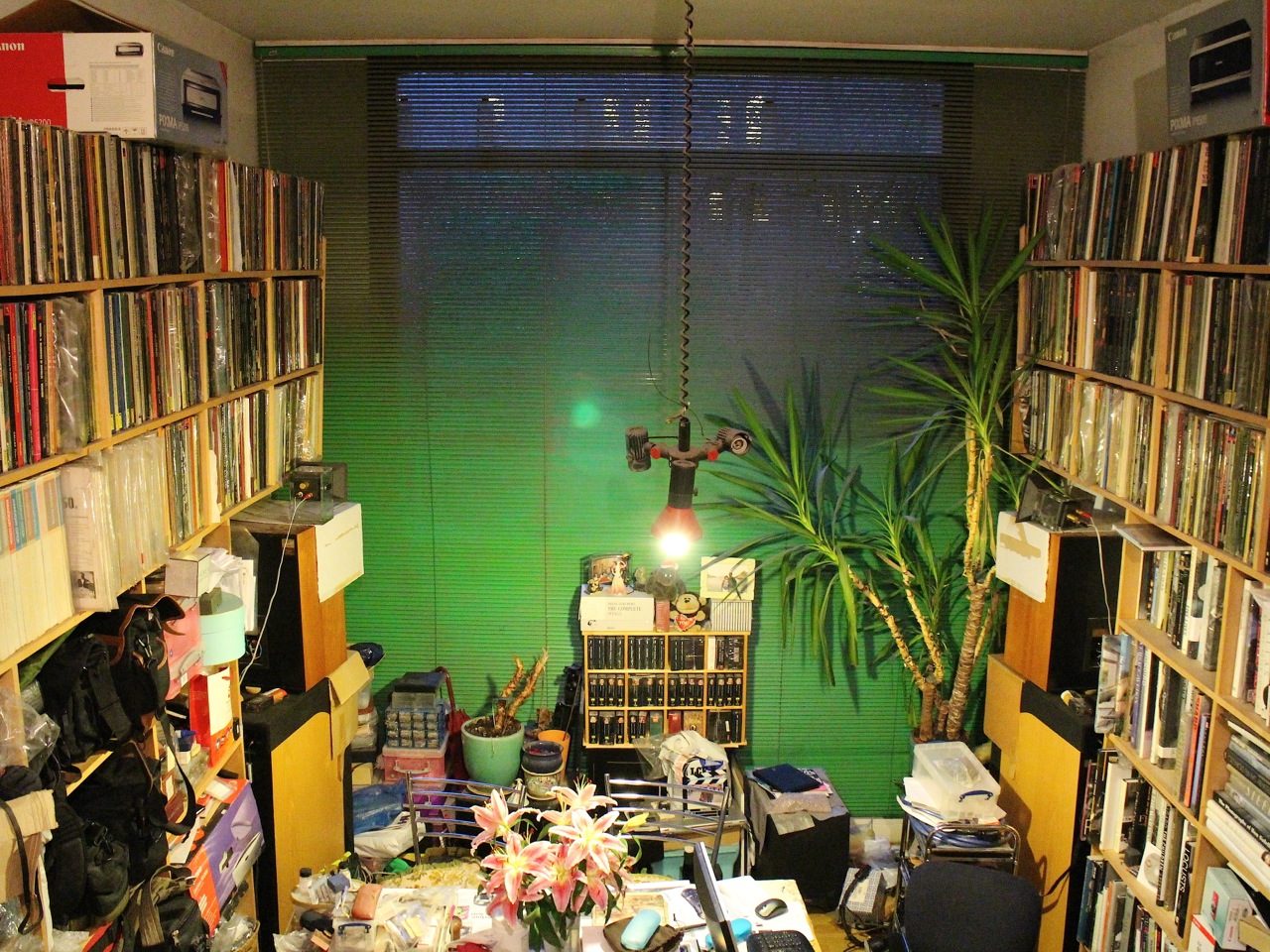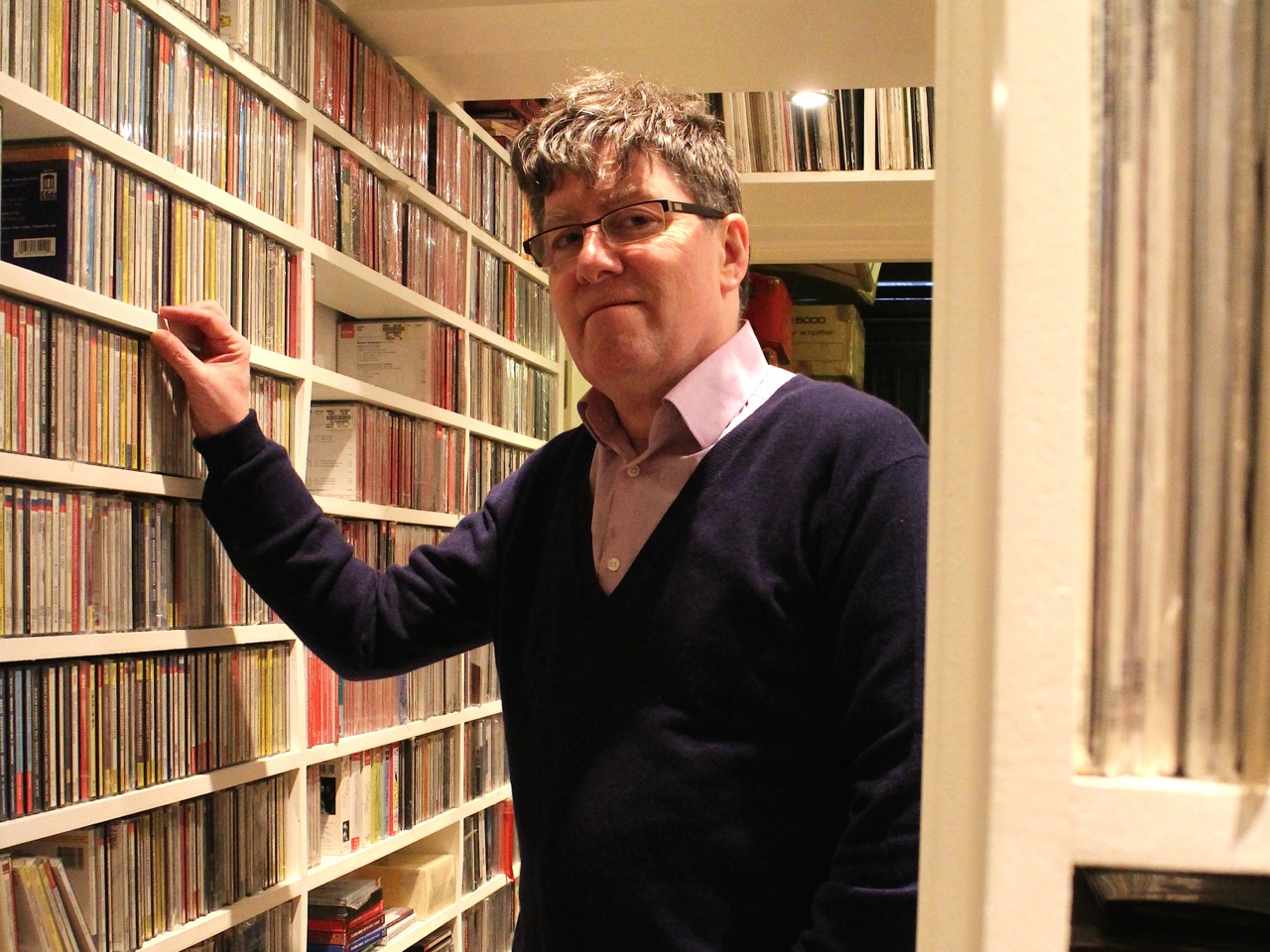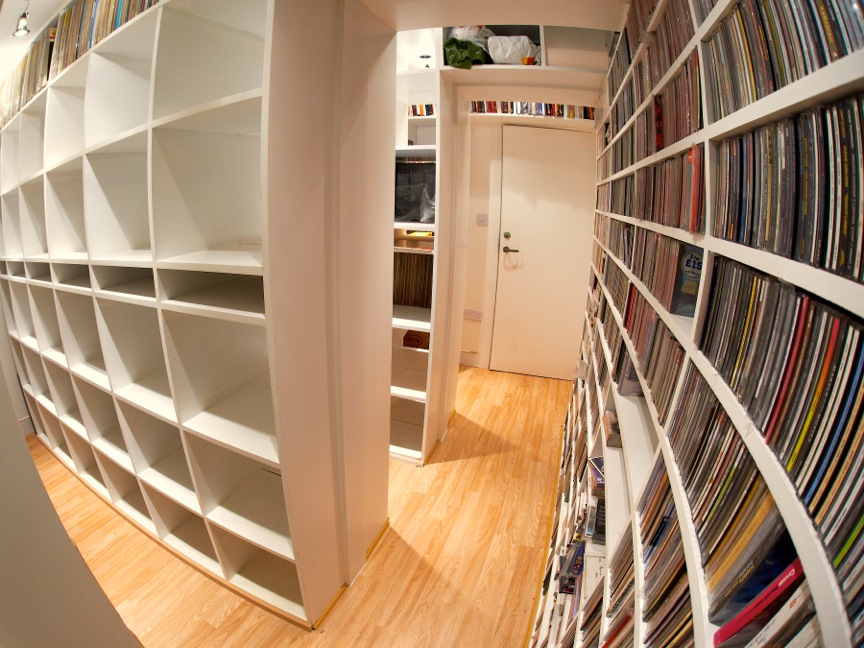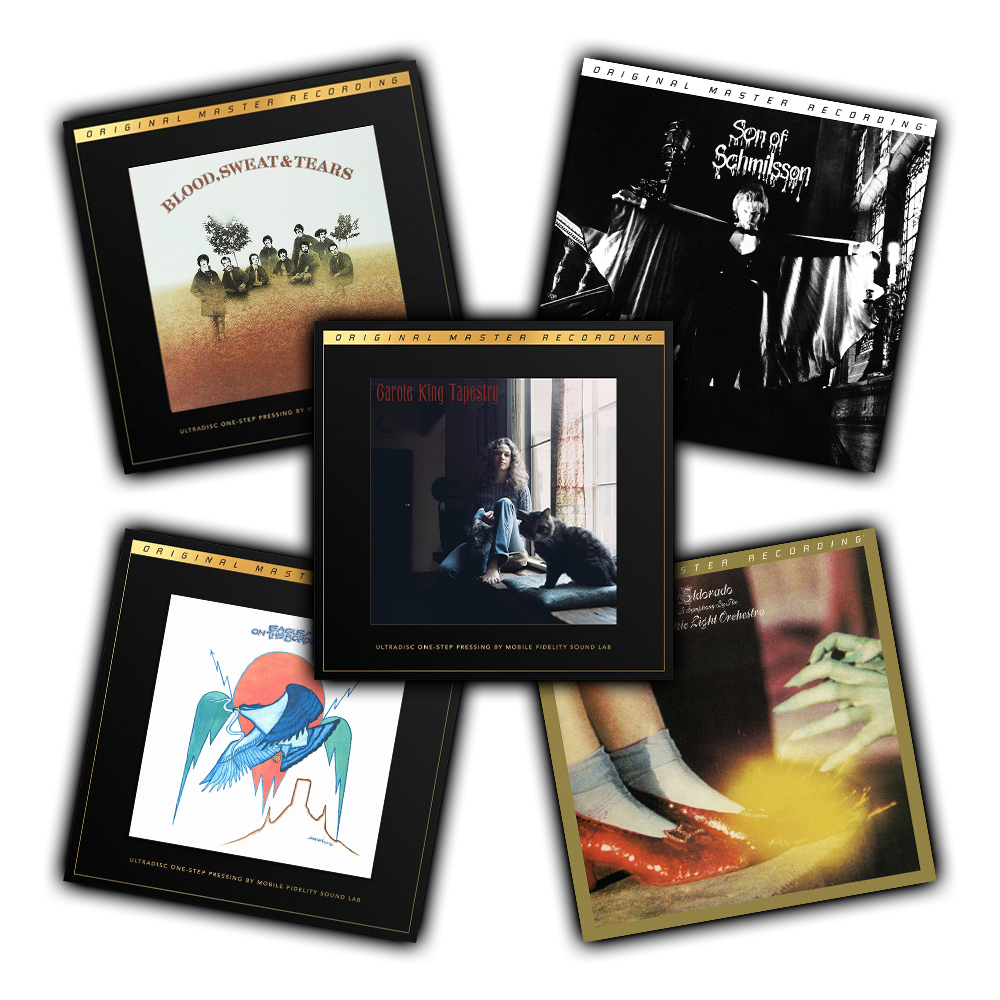Not the world’s most gregarious or outgoing of fellows, Jimmy Hughes doesn’t make a big first impression. Start chatting to him however, and suddenly you’re beguiled – he’s actually very affable and easy to get along with. Oh, and you won’t meet many people more mad about music than him…
Jimmy practically lives in his record collection; it’s so vast that every nook and cranny of his Barbican apartment is full of LPs, amassed over the last forty years. Step outside and go down to his basement, and lo-and-behold you’ll find many thousands more! He doesn’t know exactly how many records he’s got, but suffice to say Jimmy guesstimates that it is 20,000. And these aren’t straight out of some nineteen eighties Woolworths bargain bin – most are ultra rare, often bought on the first day of release. Should he ever want his living space back, then this is the sort of collection that would appear at Sotheby’s, rather than on eBay!
A London boy, you might say that he grew up just at the right time. He was a teenager at the precise moment that the ‘swinging sixties’ kicked off, living right at its epicentre in the nation’s capital city. He shopped there, worked there, and drank it all in – for him, The Beatles were God.
By the early nineteen seventies, when the world’s greatest rock music was flowing out of EMI’s Abbey Road Studios, Jimmy was getting into hi-fi. It was a perfect circle; all that amazing music from Pink Floyd, The Who, Led Zeppelin et al. was recorded to pristine perfection, and sounded great on a serious sound system. He worked at several hi-fi shops around London, then became a hi-fi writer and also put many hours in at a number of top record stores. With this unique combination of supply and demand, his life was a self-fulfilling prophesy.
Nowadays, Jimmy writes for hi-fi journals including Hi-Fi Choice, while his day job sees him working for Leica, manufacturer of some of the world’s finest cameras. What he doesn’t know about photography you can write on the head of a pin, in bold type! His memories of record collecting are rich and varied – we are transported to a seedy London of the seventies, at a dusty record shop in Cheapside. “By today’s standards it was amazing how much product was around. They would sell two or three copies a day of ultra obscure stuff, when normally you’d expect to sell this number in a month”, he tells me. This gave Jimmy the ability to buy LPs on the day of release, at trade price, so his collection started growing.
Then in 1980 he moved to Farringdon Records. “It was a crisis period, and we saw an enormous amount of product come through deleted at special price.” Needless to say, he took advantage of this purchasing opportunity, and his collection swelled. “It was a big transition, and lots of people lost their jobs. Record sales dropped, as there was such a huge change. I bought as much vinyl as I could. I filled my boots! I couldn’t believe what was coming in sometimes and it was so cheap. I would buy a certain number of things every week across the genres, often quite contemporary things, and I used to buy quite a lot of 12 inch singles. I remember summer 1984 when Thompson Twins’ Doctor Doctor came out, I went upstairs and bought it without even hearing it!”
“The early eighties was a good period musically, and it was sad that the record companies started to migrate people to CD because vinyl could sound very good. In particular, EMI were finally doing a great job on pressing quality, and cutting. I was buying a lot of reissues because they sounded so good. For example, they reissued the entire Beach Boys back catalogue, and Capitol reissued the whole of Frank Sinatra’s output in a great big box with all the original covers and everything. These were lovely editions, and weren’t terribly expensive. I worked in the hi-fi shop near HMV at that time too, and they always seemed to play David Bowie’s Let’s Dance. It was just incredible, I remember thinking golden ages were always something you never experienced – they were sort of twenty years before you were born – but I knew that early eighties music was as good as it would ever be. With so much great stuff coming out, it was really special.”
By this time, Jimmy had “five or six thousand LPs” and a Linn Sondek LP12 turntable to play them on. He had got himself a job in London’s prestigious KJ Leisuresound hi-fi dealer in the West End, three days a week. He used to go home via Soho, and became a regular at Cheapo Cheapo Records in Rupert Street. This became a habit that he couldn’t break; he would go there several times a week, often deliberately in bad weather. “I’d pick up stuff when no one else turned up”, he tells me. “There was a room in the back where they put the new stuff everyday, so everyday you could find something you hadn’t seen before. It was almost like they couldn’t cope with it! I wasn’t married at the time, and it was a bit of an obsession really.”
Unusually perhaps, Jimmy’s musical taste is very diverse – “spreading the net quite wide” as he puts it. As well as rock, pop and classical, he’s a big fan of what he calls ‘light music’. One of his trophy pieces is Ron Goodwin’s Holiday in Beirut on a very early gold label Parlophone. “It’s a real period piece done in the early sixties. If it was Please Please Me it would be worth billions of pounds… Holiday in Beirut – probably not the best place to be!”
“In the eighties there was a period when if I didn’t have it on vinyl, I didn’t feel that I had it”, he confesses. But by the mid-nineties Jimmy was running out of space and simply could not accommodate significant quantities of vinyl anymore, so tried to stop going to Cheapo Cheapo Records. “I went back in one day and Phil, the guy who ran the place, scolded me. He said, “oh, so you’re back. I haven’t seen you for a while…” It was then I realised that he was almost buying just for me – whereas before those records would be snuffled up, they weren’t selling anymore.”
Jimmy remembers a time when he would have to buy something on sight if he wanted it, because it would be gone if he came back the next day. But by 1995, things were changing. “I remember going in and buying a thirty-disc opera collection, very good stuff, but realising I couldn’t carry it home. So I went back a day later and it was still there. He said to me, “a lot has changed here”. I think he knew it was kind of all over, really…”
He says that the writing was on the wall for vinyl as a mass format when HMV in London’s Oxford Street moved the twelve-inch singles off the ground floor. This was a big psychological blow to analogue addicts, but the crunch came with the demise of Tower Records. “When they opened their first British store in Piccadilly in the early nineteen eighties, it was full of imports about which I thought, “wow, I haven’t seem that before!” It was incredible to go there because they had absolutely an amazing selection of vinyl that really hadn’t been available in the UK for many years.”
He reckons this vast multi-floored store – open from 10am to midnight almost every day of the year – was the best record emporium in London by a country mile. But just before it closed, Jimmy remembers, “I went on New Year’s Day, and my arms were actually aching because I had bought so much. I just bought as much as I could carry, because they had more or less cut everything to two quid! It was very collectable, stuff including Columbia and RCA pressings that in the UK had been long deleted.”
The near-death of vinyl meant that Jimmy stopped buying new LPs on an industrial scale, but he still partakes occasionally. He focused on Compact Discs for a while, but ran into the same storage problems, and is now a fan of Spotify. We sat in his listening room amidst a sea of ultra-rare classic vinyl and did a few searches to see if this much-vaunted streaming service could better his own collection – the answer was clearly no. Are you surprised that James Michael Hughes seems to have a wider selection of rarities than the world’s top music streaming service? Well, take one look at his record collection and you won’t be!

